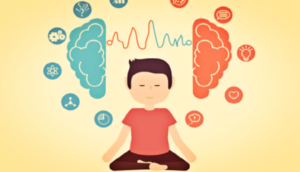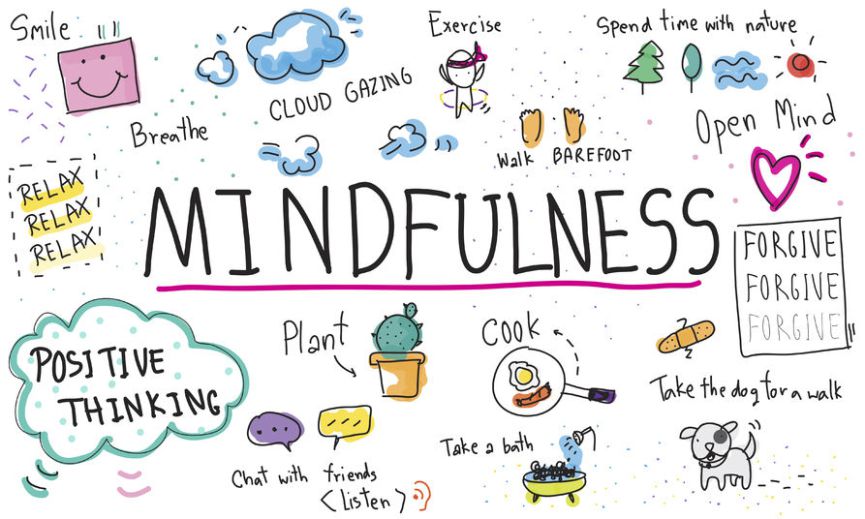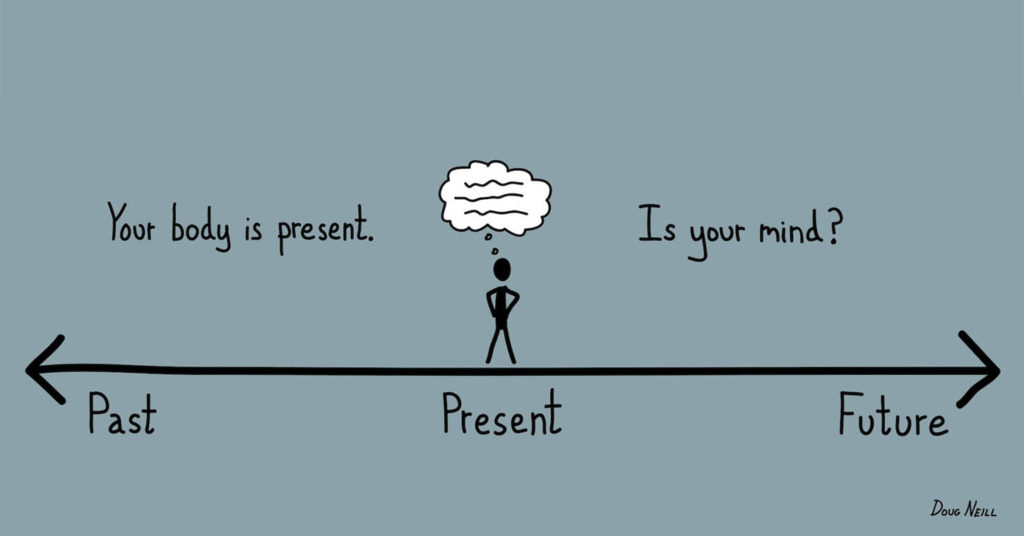What is Mindfulness?

Bringing more attention to the present moment. To our thoughts and feelings, and the world around us. Professor Mark Williams of the Oxford Mindfulness Centre describes mindfulness as “knowing directly what is going on inside and outside ourselves, moment by moment….It’s easy to lose touch of the way our bodies are feeling and end up living ‘in our heads’ – caught up in our thoughts without stopping to notice how those thoughts are driving our emotions and behaviour.”
Mindfulness is effectively about seeing the present moment clearly, allowing us to change the way we see ourselves and our lives. In this fashion, it can help to improve our mental wellbeing.
 How mindfulness helps mental wellbeing
How mindfulness helps mental wellbeing
Becoming more aware of the present moment can help us to recognise the constant flow of thoughts and feelings that we experience, and see how we sometimes get caught up in some of those thoughts in an unfavourable manner. Mindfulness practice can enable us to recognise our pattern of thought, allowing us to gradually notice when our thoughts are ‘taking over’ and to understand that thoughts are simply ‘mental events’ that do not have control over us. Once we develop this understanding and build a level of control, it allows us to deal with such thoughts and feelings more productively and shift our focus away from a problematic cycle of getting entangled in negative thoughts.
Professor Williams says, “Awareness of this kind also helps us notice signs of stress or anxiety earlier and helps us deal with them better.”
Mindfulness is recommended by the National Institute for Health and Care Excellence (NICE) as a way to prevent depression in people who have had 3 or more bouts of depression in the past.
See the NICE guideline on depression in adults.

How to be more mindful
The first step can be to take more notice of thoughts and feelings, and the world around us.
Notice the everyday
Spend time becoming more aware of our surroundings and sensations. Rather than running on auto-pilot, pay attention to the small details in each moment.
Keep it regular
It can be useful to pick a regular time when you can decide to pay attention to the sensations around you and practice mindfulness. For example, whilst on a daily walk, cycling to work etc.
Watch your thoughts
People often find practicing mindfulness difficult, instead of emptying their mind of thoughts, they find thoughts come flooding in! This is fine, the thoughts can be acknowledged, and then allowed to pass on by…similar to buses coming and going at a bus stop! It may be easier to deal with overactive thoughts, if mindfulness is practiced whilst walking, or doing yoga.
Name thoughts and feelings
To develop an awareness of thoughts and feelings it can be helpful acknowledge and name them. Such as “This is anxiety”. Or, “Here is the thought that I will mess up this interview”
Free yourself from past and future
It can be useful to pause and practice of few minutes of mindfulness if we realise that we have been ‘stuck’ reliving past problems or envisaging future worries.

Different ways to practice mindfulness.
As well as practicing in everyday life, it may be useful to set aside formal practice time. Different ways this can be done include:
- Mindfulness meditation
- Yoga
- Tai-chi
Mindfulness may not be for everyone, however there is encouraging evidence for its use in health and wellness. With a bit of practice and patience, most people can experience positive improvements in their mental wellbeing from regular use.
I will follow up this post with an article from the NHS with their 5 steps to Mental Wellbeing. This will sum up nicely everything that we have touched upon in the last few blog posts. It is also extremely important to think about these 5 steps as we navigate our way through this Covid-19 pandemic – implementing each of the 5 steps can have a profound effect on keeping healthy during these challenging times.
If you missed the previous posts on keeping healthy during the pandemic, you can find my post on exercise HERE & the post of diet HERE.


